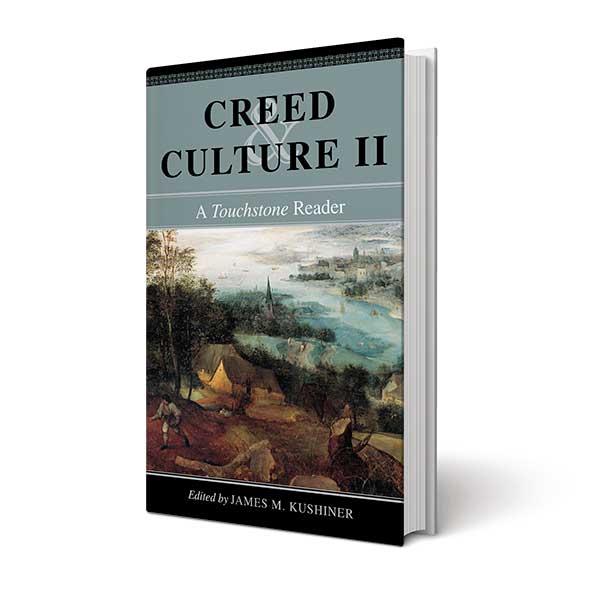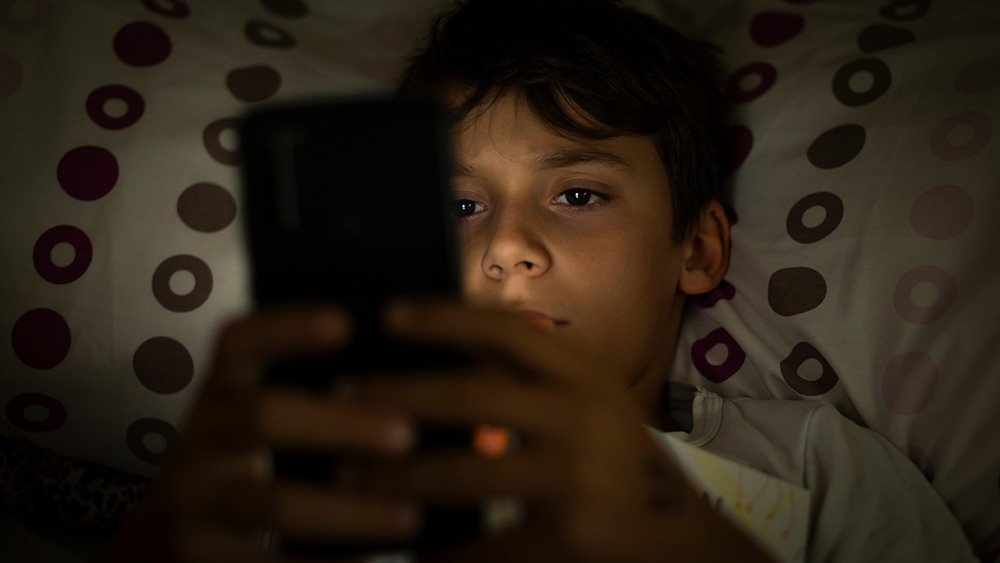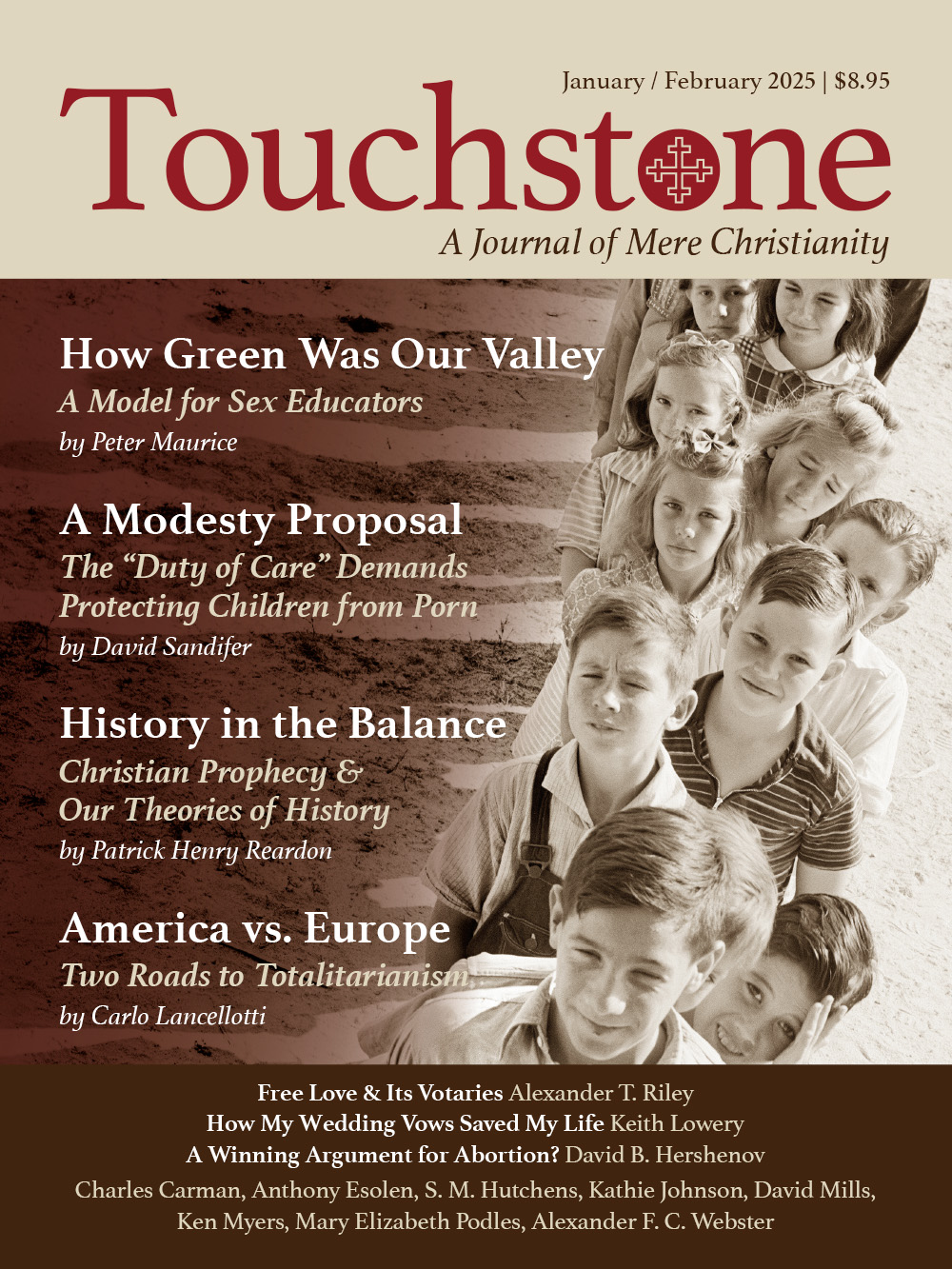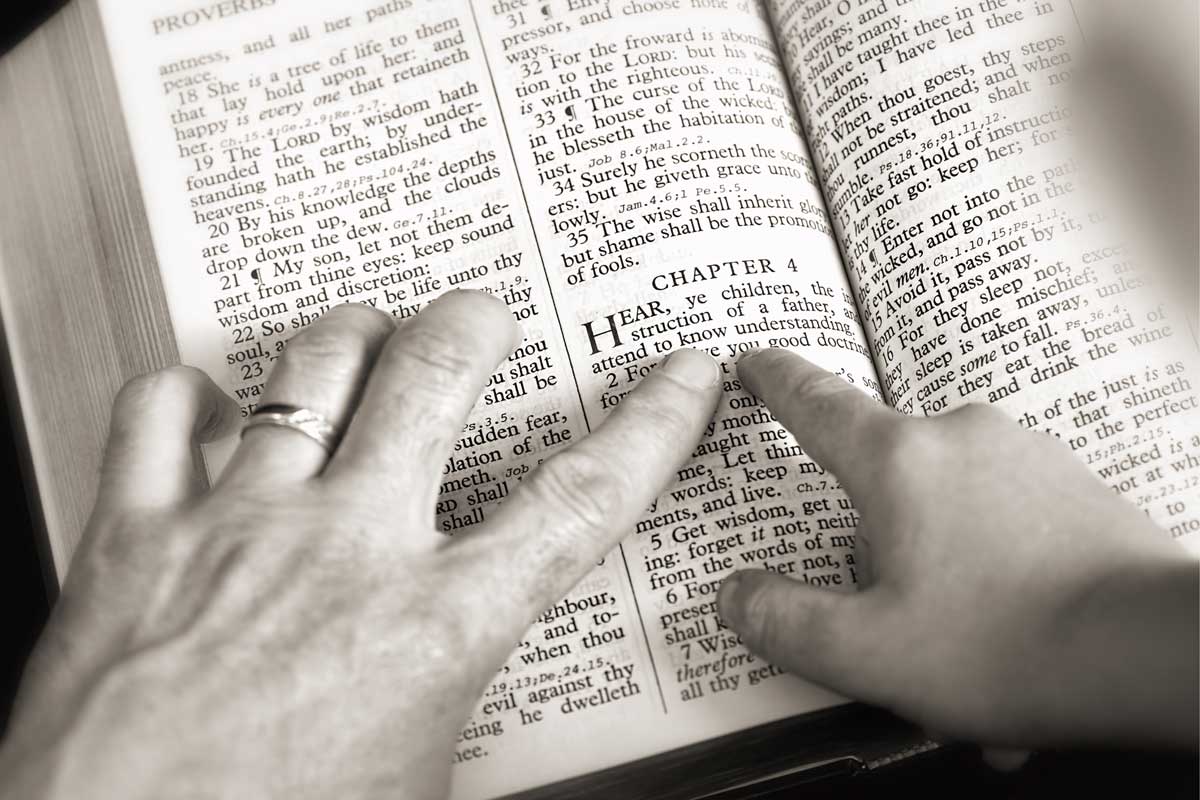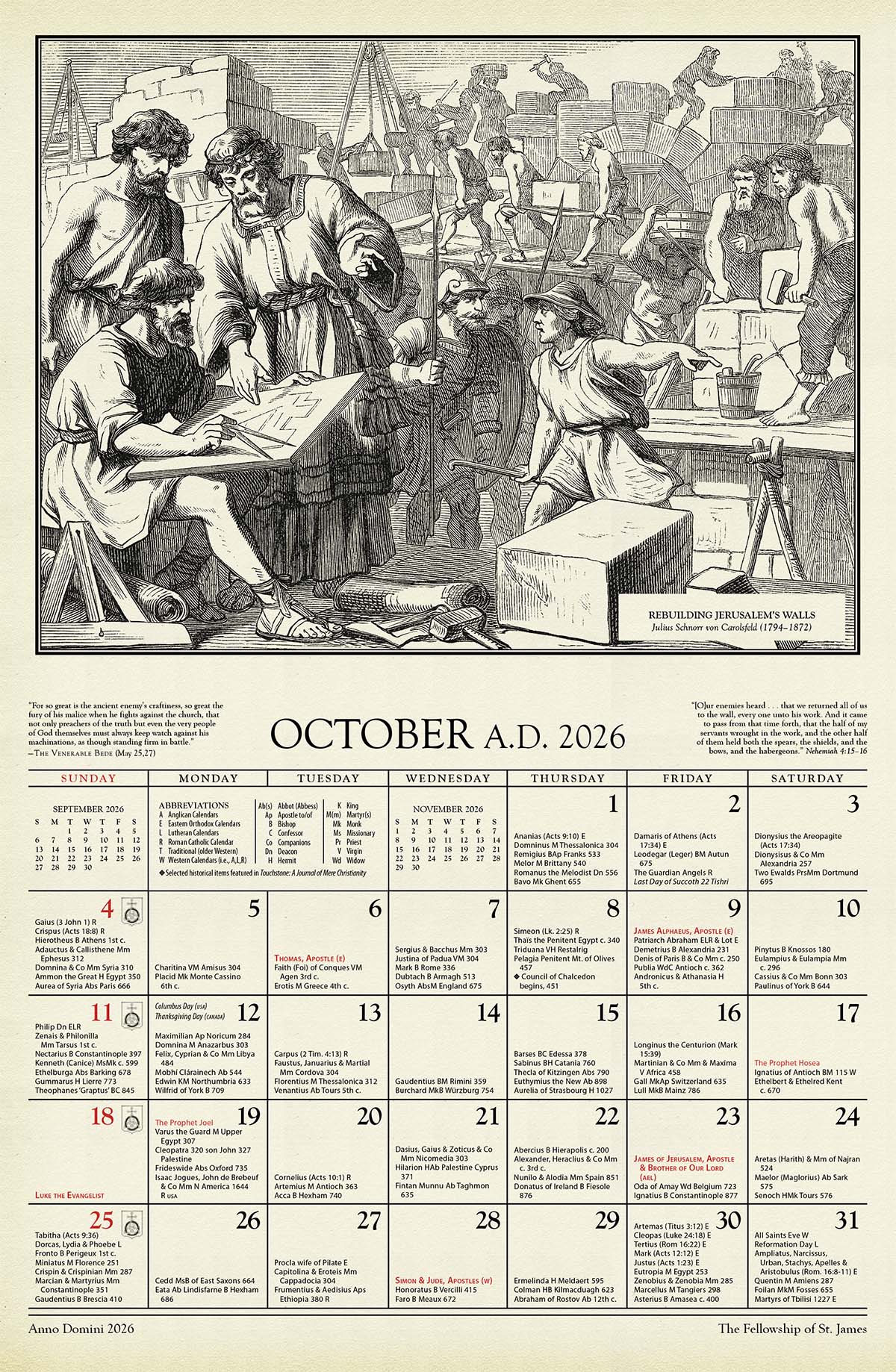A Modesty Proposal
The “Duty of Care” Demands Protecting Children from Porn
Whoever causes one of these little ones who believe in me to sin, it would be better for him to have a great millstone fastened around his neck and to be drowned in the depth of the sea. (Matt. 18:6)
I started watching porn when I was, like, 11. . . . I think it really destroyed my brain and I feel incredibly devastated that I was exposed to so much porn. (Pop singer Billie Eilish, quoted in The Guardian, Dec. 15, 2021)
The ubiquity of pornography in the early twenty-first century is one of the major cultural developments of our era, one that is only beginning to be studied and understood for its social impact. Some observers (and the legislatures of sixteen states) have described it as a public health crisis. This is especially true as more and more children are exposed to pornography through access to the internet. In spite of this, Christians have largely resigned themselves to the pornography explosion and, with a few exceptions, have not been at the forefront of advocating for policy solutions in the last twenty years.
This is strange. In the 1970s and 1980s, when pornography first became widely available, Christians led anti-porn campaigns in Britain, the U.S., and Australia. Yet even as porn has exploded with the rise of the internet in the 1990s, followed by the advent of smartphones in 2007, Christians have become less engaged with the issue at a political level. No doubt political and legal defeats took some of the steam out of these movements. Also, some Christians, especially as their social standing rose, became uncomfortable associating themselves with the purity crusades and “moral panics” of earlier eras, and of being viewed as what Australians call “wowsers”—moral busybodies. And without question, many Christians simply became too inured to the pornification of society to fight back.
Yet the societal damage caused by pornography is real and profound. The evidence demonstrating the harm caused by porn is now incontrovertible. Those who consume porn are more likely to: engage in early sexual activity but are less likely to marry; view women as sex objects; have difficulty forming intimate relationships; devalue fidelity; and are more apt to rationalize sexual violence. Brain research on porn-addicted individuals demonstrates a measurable deterioration in cognitive function similar physiologically to that seen in drug addicts and alcoholics. There is growing evidence that the dramatic rise in erectile dysfunction in young men is linked to porn use, and pornography is associated with a higher risk of divorce in married couples and, by some counts, is a factor in over half of U.S. divorce cases today.
The Mystery of Modesty
Attempts to combat pornography at the public policy level will rest largely on the demonstration of these “objective harms” as part of the public reasons guiding a response. Yet from a Christian perspective, the first task is to place pornography within a theological framework. It is important to think more deeply about what makes it so destructive, something more than simply an illicit private pleasure.
It bears remembering that the Church was born into a cultural context of diverse sexual expressions often unencumbered by moral judgments, and that many of the writings both in the New Testament and the patristic period were self-consciously seeking to engage this setting for the purpose of Christian discipleship. Christian tradition has a rich vocabulary relating to the ethics of sex, some of it drawn from the Scriptures and some of it extra-biblical, reflecting its historical importance in church teaching. Negatively, words such as “lust,” “fornication,” “wantonness,” “concupiscence,” “prurience,” “obscenity,” “cupidity,” “depravity,” “perversion,” “defilement,” “lewdness,” “shame,” and “unnatural” mark out the semantic field; positively, the words “chastity,” “purity,” “innocence,” “continence,” and “modesty” point to the desired virtues.
All of these to some degree come into play as we consider pornography. Of particular significance is the word “modesty”—and, perhaps even more so, its French equivalent, pudeur (pyoo-’der), which arguably has a richer and wider resonance. Thus, the French legal code until the beginning of this century referred to statutory rape as attentat à la pudeur and to indecent exposure as outrage public à la pudeur —pudeur here conceived not merely as a personal attribute but as something that exists in the public space, and that the state has a responsibility to protect.
Belgian writer Christophe-Geraldine Métral, in La pudeur, ou l’être discret, argues that pudeur is related to the wish to preserve what is most personal from “banalization and objectification.” It is “a kind of tact which is concerned with that which cannot suffer to be publicized . . . without being devalued.” French philosopher Janine Rossard, in Une clef du Romantisme: La pudeur, describes it as springing from the conflict between two levels of human life, that of the body, and that with a “higher demand,” the spiritual. Pudeur functions as a reflection of the tension between these two levels—Balzac called it “la conscience du corps,” the conscience of the body. This is what Max Scheler—who accorded modestya central role in his philosophical project—had in mind when he described it as that which makes it possible to “consecrate one’s intelligence and one’s efforts to objective values, by limiting the powerful and ever-present tendency to abandon oneself to the impulses of the libido.” For Métral, it is the very mystery of modesty which makes it a signpost to something else: it “redounds to man as a being relating in a primary manner to himself and to transcendence.”
The Repudiation of Restraint
Modesty, then, is conditioned on a rejection of a materialist conception of our humanity and presupposes a belief in transcendence. It reflects, in Métral’s words again, “the uncertainty of existence, the premonition that one is a being for whom it is not true that all is of equal value, that one can do whatever one pleases, in any way, with respect to one’s body and one’s feelings”; thus, “it is, in its essence, the intuition of value.”
The Victorians were famously concerned with protecting modesty, but for them, too, it was ultimately materialism they were battling. Coventry Patmore’s poem “The Angel in the House”has since become a risible emblem of female oppression and domesticity, but it was praised in 1858 in the worldly Edinburgh Review precisely as an encomium to modesty as a philosophical stance. The reviewer, Aubrey de Vere, highlights Patmore’s correct anthropology, in contrast to the “gnomes of the poetic world” who, “under the guise of celebrating the passions,” in reality sing to “the triumph of animal instincts thinly veiled”; their error was that “they have missed the true philosophy of man.”
Conversely, the rejection of modesty is strongly associated historically with materialist philosophy and in particular with what historian Jonathan Israel has called the Radical Enlightenment, represented by such figures as Spinoza, La Mettrie, and Diderot. The historian Lynn Hunt, in The Invention of Pornography, has shown that the origins of Western pornography are strongly linked to the Radical Enlightenment and that it was “profoundly materialist in inspiration.” Denis Diderot considered pudeur as a mere social construct, which would be thrown off with progressive enlightenment. He also wrote several pornographic novels and, anticipating Freud, charmingly opined that “there is a bit of testicle at the bottom of our most sublime feelings and our purest tenderness.”
The French materialist physician and philosopher Julien Offray de La Mettrie attempted to theorize sexuality on the basis of physical pleasure alone. More crudely, in the anonymous eighteenth-century libertine novel Histoire de dom Bougre, a nun explains that “when one says the Gentleman . . . is in love with the Lady . . . it is the same thing as saying, the Gentleman . . . is dying to put his P***k into her C**t. That’s truly what it means.” In the nineteenth century, this was sometimes the tack of those who disparaged concerns for modesty as so much “cant.” Byron claimed that the women who disapproved of his Don Juan did so because it “took off the veil” and “showed that all their d—d sentiment was only an excuse to cover passions of grosser nature” when they were anxious to “keep up the illusion which is their empire.”
Pornography is, at its core, the antithesis of modesty and of any vision of reality that allows for the possibility of it. It affirms a materialist outlook that denies as either optional or illusory anything more to sex than its physical manifestation. In so doing, it rejects not only the central Christian claim about sex—that it is ontologically rooted in the union of man and woman in marriage—but also a Christian anthropology that accords to human beings a unique dignity within the created order. Denying the biblical narrative about human nature and identity, porn proclaims an alternative vision: that we are notmade in the image of God but are “just animals”; that sex is not the physical expression of a mystical union of man and woman in marriage but is “just sex,” a pleasurable stimulation of human bodies.
It is perhaps for this reason, too, that porn, in spite of its ubiquity and banalization, retains an association with shame: while many forms of sexual license are now celebrated in Western culture, porn retains an ambiguous status in spite of many attempts to rehabilitate it. As the actor Russell Brand expressed it in a widely shared YouTube post in which he confessed his own struggles with porn, “I don’t put that laptop lid down and say, ‘There! What a productive piece of time spent, connecting with the world!’” If, as Paul tells us, sexual sin defiles one in a special way (1 Cor. 6:18), then pornography is emblematic of this degradation: it absolutizes the divorce between desire and human relationship and imprisons its user in a solipsistic and debased facsimile of romantic love.
Recognizing pornography as the repudiation of modesty helps us understand, too, its traditional designation as a form of obscenity, the obscene being that which is not only sexually explicit but also specifically intended to corrupt—its purpose is to steer sexual desire away from chastity and towards lust. The concept of obscenity, and its attendant repression through law codes, reflects a recognition of two core truths about the sexual instinct: first, its inflammability, and second, its malleability—and thus its potential for being easily directed towards illicit or perverse ends. A precondition of modesty is an acknowledgement of the special vulnerability of sexual desire and the importance of protecting it as a result.
The Threat to Children
A proper appreciation of the importance of modesty in turn provides part of the conceptual apparatus for justifying the traditional view of pornography as particularly damaging for children: since children are more impressionable in general and thus more vulnerable, it follows that they are likely to be those most harmed by exposure to pornography.
Contra those who would describe such concerns as “moral panics” reflecting an obsessive desire to police normal juvenile sexual curiosities, the instinctive revulsion that most adults still feel about children’s exposure to pornography in fact reflects deep and stubborn intuitions about our sexual natures. These are connected not only to the importance of protecting children from something they are not ready to understand but also, more profoundly, to concerns about their moral formation and their sense of themselves in the world.
“Childhood innocence” is certainly a fiction if by that we mean a kind of prelapsarian state of moral superiority, but it is a deeply felt and precious reality in the sense of mostly unformed sexual selves that are yet unaffected by corruptions they have not experienced. Children are not able to correctly order sexual desires that are still inchoate and, pace Freud, often barely felt, so it is a very great evil indeed to corrupt them by disordering them in their nascent state, creating patterns and associations they may never unlearn.
No doubt this is the reason why the sexual molestation of children continues to produce such a ferocious reaction in our society at large—the logic of the sexual revolution notwithstanding, the sexualization of children still engenders revulsion. We must inscribe pornography, then, within these intuitions about the vulnerability of children: exposing children to porn is sexual abuse.
How should we frame a Christian response? Our first duty is without question to our own homes, families, and churches, as we seek to be “innocent of evil” (Rom. 16:19) and to fill our minds with things which are “honorable, pure, and lovely” (Phil. 4:8).
In addition, there is, inescapably, a public dimension to the porn crisis, and seeking to address it is part of loving our neighbors. The first thing that must be said in this regard is that we are faced with a chasm between the Christian evaluation of pornography as a serious moral evil bringing personal and social harm, and the one generally in force in contemporary culture, where it is seen above all as a matter of personal choice, along with other sexual behaviors. While there is often distaste and unease in the face of the porn phenomenon and even attempts at curbing aspects of porn availability (as when the world’s largest porn site removed most of its content because of pressure from credit card companies regarding questions of consent), the accessibility of porn for adults remains firmly entrenched as a matter of personal freedom, and any attempts to limit it will run into some widely internalized version of the harm principle and thus be viewed as paternalistic interference at best and repressive coercion at worst.
However, when we turn to the availability of porn for children, we face a markedly different situation. Here, concerns informed by a Christian vision of sexuality and those of the larger society still largely overlap. Indeed, it is difficult to imagine, in our current cultural moment, someone arguing publicly that children have a right to access pornography if they desire to. Whether or not this is a consistent approach (and indeed whether or not it is likely to be maintained as the sexual revolution continues to transform public attitudes) is not our concern here; as a pragmatic matter, there is still a strong consensus in the West that children ought to be shielded from explicit sexual content. Thus, in engaging the problem of pornography in the public sphere, we have two reasons for focusing efforts on the exposure of children: first, because they are likely to be the most harmed; and second, because it is here that efforts to bring about change are most likely to gain traction.
Porn & Duty of Care
A useful framework for thinking about the general availability of online pornography, and the attendant risk of exposure to children, is the legal concept of duty of care. This refers to the responsibility of individuals and corporate entities to protect vulnerable persons who may be harmed by their actions, if the harm can reasonably be foreseen and prevented. The application of the concept in tort law is complex and variable, and its extension to government entities is controversial—it would no doubt be an uphill battle, in most jurisdictions, to litigate successfully against governments for their failure to protect children from pornography. Nonetheless, the concept provides a useful moral framework for thinking about the role of government policy with respect to the unimpeded accessibility of porn. It is common sense, for instance, to maintain that schools have a responsibility to seek to protect children from physical harm during the hours when they have them under their charge, and local governments likewise must ensure that the public water supply is free from contamination.
Though it does not employ “duty of care” as a technical term, the UN Convention on the Rights of the Child uses similar language, stating that signatory states will “ensure the child such protection and care as is necessary for his or her well being” (Article 3.2). More explicitly, some children’s advocacy groups employ the terminology in campaigning for greater online protections for children; in the U.K., for example, the National Society for the Protection of Cruelty to Children (NSPCC) includes in its first “test” for an online safety bill that “it have, at its heart, an expansive principles-based duty of care.” In the U.S., the Kids Online Safety Act (S.1409), which passed in the Senate in July 2024, uses the language of duty of care for its proposed measures. What is important about this concept is that it sets out an obligation, not just a desired outcome. So a school may choose not to expand a playground because of other educational priorities, but it cannot refuse to remove a pile of asbestos from that same playground because it’s too expensive to do so.
Approaching the question of child exposure to porn through this lens is helpful because it deflects the two most common objections to efforts to limit access to online porn: that nothing can be done, and that nothing should be done. As to the first, it is often argued that the internet is inherently too open, too disorganized, and too “bottom-up” for any such effort to be successful. As U.K. Prime Minister David Cameron put it when he introduced porn filtering regulations, “People sometimes feel they’re being told . . . that an unruled internet is just a fact of modern life; any fallout from that is just collateral damage and that you can as easily legislate what happens on the internet as you can legislate the tides.”
In response to this, we may observe that history furnishes us with many examples of significant societal improvements that were at first deemed impossible; the abolition of slavery in the British colonies in the early nineteenth century, the stunning reduction of smoking beginning in the 1980s, and the dramatically declining cost and widespread adoption of solar power in the last fifteen years stand out as signal instances of major successes initially derided as “lost causes.” In the case of children’s online exposure to porn, there is in fact already ample evidence that there are effective, if necessarily imperfect, technical solutions.
Moreover, if society has a duty toward children to protect them from porn, then every effort must be made in that direction, even if the issue appears to be insurmountable; a problem may indeed be unsolvable, but we cannot know until we truly try. As every parent knows, “I can’t” is often an excuse for “I don’t want to” or “I’m too lazy to try.” In point of fact, there has until very recently been shockingly little effort across the globe to address this issue (the U.K. being one notable exception).
The other claim frequently heard regarding efforts to regulate online pornography is that any such effort should not be attempted because it would dangerously tread on freedom of self-expression and on the rights of adults—and would thus be a slippery slope toward the suppression of the internet as a free and unregulated medium. But in the first place, it is of course a fiction that the internet is free and unregulated; illegal content, in particular, child pornography and sites that encourage violence or terrorism, are policed and suppressed in most Western nations—pushing them toward the so-called “dark web” to avoid detection. Likewise, as controversies during Covid-19 demonstrated, the algorithms of dominant social media platforms—which determine which content is promoted—are heavily controlled and directed by their parent companies. Furthermore, the kinds of limits involved in seeking to make pornography unavailable to children would neither eliminate it from the web nor make it particularly onerous for adults to obtain; regulation of online pornography attempts to introduce protections to the online space similar to those that have long been customary in the physical one, where porn magazines or videos cannot be purchased by minors.
This is an important point to bring out because, in most jurisdictions, it is already technically illegal for minors to access pornography—in other words, the reality of widespread availability of online porn to children usually represents a failure to apply existing law to the online environment. What is fundamentally needed, therefore, is not a new conceptualization of obscene content in relation to children but a willingness not simply to accept the “facts on the ground” and uphold in practice what is legal doctrine in theory. The Obscene Publications Act (1959) in the U.K., Article 227-4 of the Code Pénal in France, and the Online Safety Act (2021) in Australia all explicitly criminalize the distribution of pornography to children.
The U.S. Situation
The legal situation is somewhat more complicated in the U.S. Two attempts to codify the protection of children from online pornography (which Congress deserves unmeasured praise for passing), namely, the Communications Decency Act (CDA, 1996) and the Child Online Protection Act (COPA, 1998), were notoriously struck down by the Supreme Court, either in part (CDA, Reno v. ACLU, 1997) or as a whole (COPA, Ashcroft v. ACLU, 2004). If it is doubtful that the application of these laws would have had a “chilling effect on free speech,” as alleged in the Reno majority opinion, it is undeniable that these repeated roadblocks to reform have had a chilling effect on efforts to suppress child access to porn in the United States.
Yet, there is no reason to believe that the door is closed to legal remedies in the U.S. In the first place, the Reno decision upheld that “transmitting obscenity and child pornography, whether via the Internet or other means, is . . . illegal under federal law for both adults and juveniles.” Furthermore, the Department of Justice’s own guidance on the subject, from its Child Exploitation and Obscenity Section, states that “any transfer or attempt to transfer [obscene] material to a minor under the age of 16, including over the Internet, is punishable under federal law” (18 U.S.C. §1470) and that “the standard for what is harmful to minors may be different than the standard for adults.”
It is worth noting, too, that both the Reno and Ashcroft decisions left open cracks that could yet be exploited. In the case of the former, Justices O’Connor and Rehnquist, in a concurring opinion, specifically qualified their support with the statement that it was “as of 1997” and that a special “adult zone” of the internet, inaccessible to children, was something that should be considered when the technology allowed for it. In the case of the latter, the decision was largely based on the argument that Congress had failed to show that filtering software would not be just as effective as COPA in limiting access by children, without impacting free speech.
But in the nearly twenty years since Ashcroft and the twenty-five since Reno, both the social and technological environments have changed dramatically. Most obviously, the internet is no longer something accessed primarily on a computer, either at home or in the school library—and therefore susceptible to adult controls like filtering—but is omni-present and in the pocket of virtually every teenager and many children; even the most conscientious parent cannot monitor all the screens that a minor has access to. The U.S. situation, then, is ambiguous: on the one hand, the distribution of obscenity in general and to minors especially is technically illegal, but on the other hand, attempts to codify this further have been frustrated, and enforcement, at both state and federal levels, has until very recently been effectively nil. The landscape is ripe for new legal strategies.
The Promise of Online Age Verification
We are left, then, with the question of which approach may best be employed to curb access to pornography by minors, not only in the U.S. but globally. While other methods exist (such as default-on filtering, as mandated in the U.K.), what is increasingly seen as the most effective tool in this battle is what is known as online age verification. This approach requires any website or content provider with content inappropriate for minors to ensure that anyone accessing it is of legal age to do so. There are several ways of implementing this, but the most advanced of these systems provide anonymity to porn users, a process known as ZKP, which stands for zero knowledge proof. These kinds of systems both allow providers of pornographic material to continue to operate on the web (addressing censorship concerns) and protect the anonymity of adults who access their content (addressing privacy and freedom concerns). This, then, is very much like the kind of “adult zone” which Justices O’Connor and Rehnquist desired but was not yet practicable with 1997 technology.
Age verification systems are not perfect. Their biggest weakness is that they can be circumvented with a virtual private network (VPN), which disguises the location of a visitor to a website. However, websites can block access by VPN servers—major content providers routinely do this already, and quite successfully. A porn provider would have an incentive to do this if the law held it responsible for any access by a minor, by any means—this is the way the proposed Online Safety Bill is framed in the U.K., for example. An age-verification regime would no doubt result in an arms-race between enforcement agencies and mainstream porn providers on the one hand, and shadowy web sites and dedicated nerdy teenagers on the other. But this is arguably more a feature than a bug; most porn would be enclosed within an age-restricted space, and the rest would be pushed towards the margins in the dark web, along with other illegal content.
Encouragingly, age-verification laws are beginning to gain traction, both in the U.S. and internationally. In the U.K.—where a recent survey showed that 83 percent of parents support them—the Digital Economy Act of 2017 initially included an age-verification requirement, and it has been reintroduced, in widened form, in a new Online Safety Bill. Both Germany and France are in the process of implementing similar requirements, and they are also being considered in Australia. Perhaps most encouragingly, Louisiana introduced an age-verification law in 2022, which passed both chambers with only one nay vote, and went into effect on January 1, 2023—and so far over a dozen other states have followed suit, introducing similar bills over the past two years.
Though most of these efforts seem destined to face significant legal challenges (and many already have), there appears to be real momentum for such laws at the state level in the U.S. Still, for all that, no Western nation has yet effectively implemented a national age-verification regime, and such a law has yet to show any traction in the U.S. Congress (the Kids Online Safety Act does not include any age verification measures for pornography). The silver lining to this slow progress is that, contra the claims that such schemes are impracticable, the required technology is now mature, and several companies—including, notably, the world’s largest purveyor of pornography—have invested considerable resources into age-verification products that are already functioning; there is even an Age Verification Providers Association. In short, age verification is a technically proven and effective response to the crisis of child exposure to porn, and one which is available to us now. It is not perfect, but it is the obvious remedy for one of the great moral and social problems of our era.
A Moral Imperative
Here is a thought experiment: Imagine yourself magically transported back to the year 1900. You are in, say, New York, San Francisco, or London, and you are describing the media environment of today to typical residents. You tell them that in the future, people will carry machines in their pockets that can access and display nearly unlimited amounts of information. These machines will also show motion pictures. And among these moving images will be millions upon millions of graphic displays of every sex act imaginable, often conjoined with violence, and all accessible within milliseconds. You further tell them that virtually every young person, and many children, will carry such machines, that they will be able to view all of this unimpeded, and that many of them will. If they ask you what impact this will have, you’ll admit that it is tremendously harmful to young people morally, psychologically, and socially.
It is not difficult to imagine their response: once they got past the shock and disbelief, they would surely ask why, in a society as advanced as ours, nothing has been contrived to remedy this—why minors are allowed to carry such devices, and why nothing is being done to protect them from such corrupting influences.
Why indeed?
David Sandifer teaches ethics and practical theology at Tyndale Theological Seminary in Amsterdam. His Ph.D. (Cambridge, 2014) looked at concerns about the protection of moral innocence in early nineteenth-century Britain. Previously, he served as a pastor in the U.S. and Australia, and he co-founded Porn Harms Kids in Australia (later echildhood.org).
subscription options
Order
Print/Online Subscription
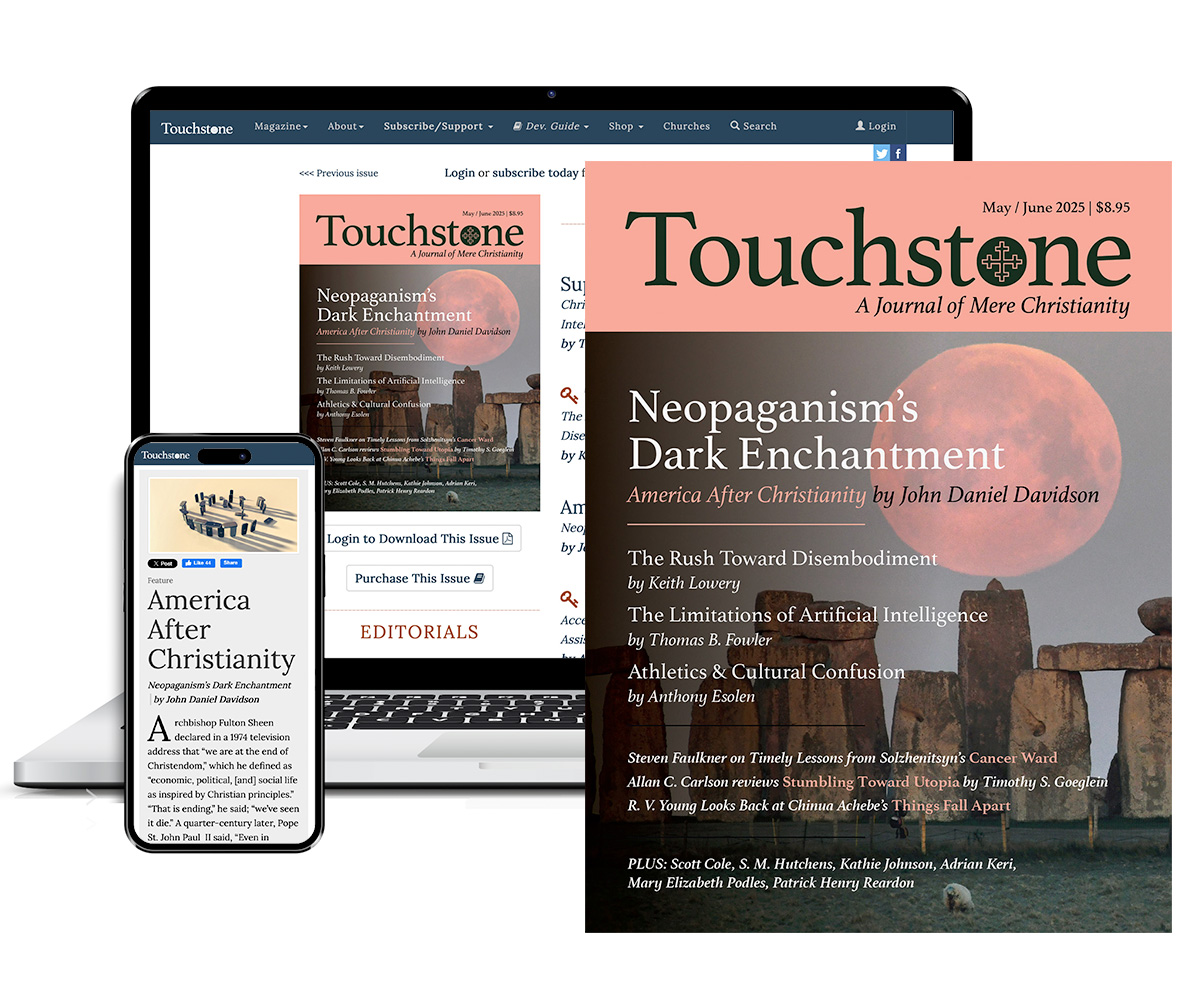
Get six issues (one year) of Touchstone PLUS full online access including pdf downloads for only $39.95. That's only $3.34 per month!
Order
Online Only
Subscription

Get a one-year full-access subscription to the Touchstone online archives for only $19.95. That's only $1.66 per month!
bulk subscriptions
Order Touchstone subscriptions in bulk and save $10 per sub! Each subscription includes 6 issues of Touchstone plus full online access to touchstonemag.com—including archives, videos, and pdf downloads of recent issues for only $29.95 each! Great for churches or study groups.
Transactions will be processed on a secure server.
more on education from the online archives
more from the online archives
calling all readers
Please Donate
"There are magazines worth reading but few worth saving . . . Touchstone is just such a magazine."
—Alice von Hildebrand
"Here we do not concede one square millimeter of territory to falsehood, folly, contemporary sentimentality, or fashion. We speak the truth, and let God be our judge. . . . Touchstone is the one committedly Christian conservative journal."
—Anthony Esolen, Touchstone senior editor




